
LOADING ...
In response to evolving domestic opinion, eMedals Inc has made the conscious decision to remove the presentation of German Third Reich historical artifacts from our online catalogue. For three decades, eMedals Inc has made an effort to preserve history in all its forms. As historians and researchers, we have managed sensitive articles and materials with the greatest of care and respect for their past and present social context. We acknowledge the growing sentiments put forth by the Canadian public and have taken proactive actions to address this opinion.
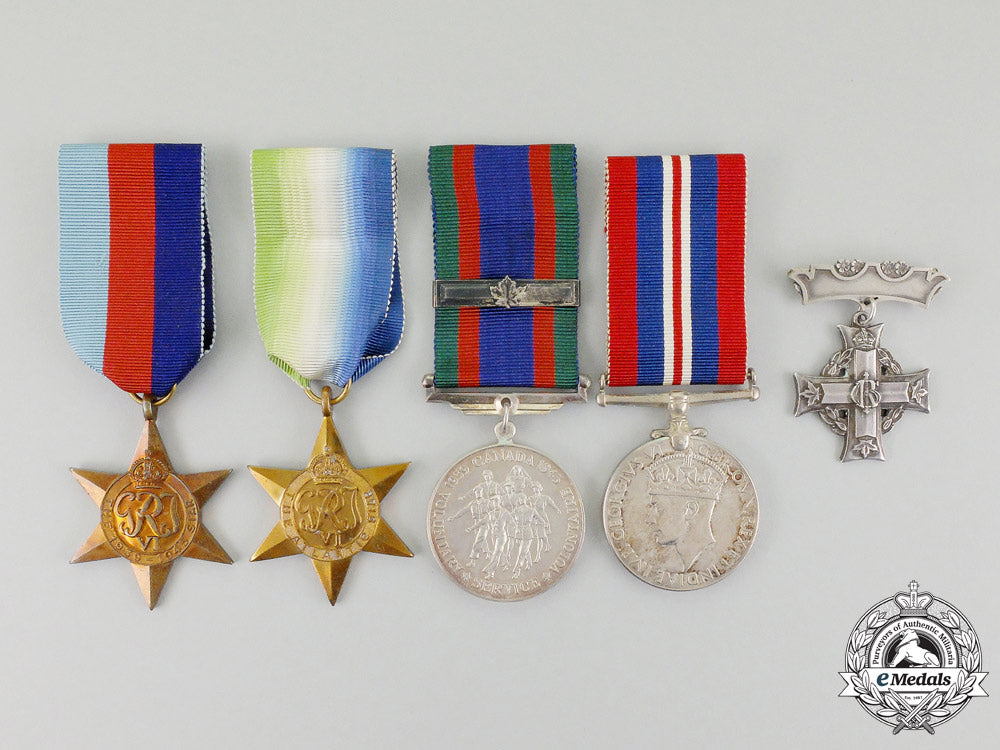
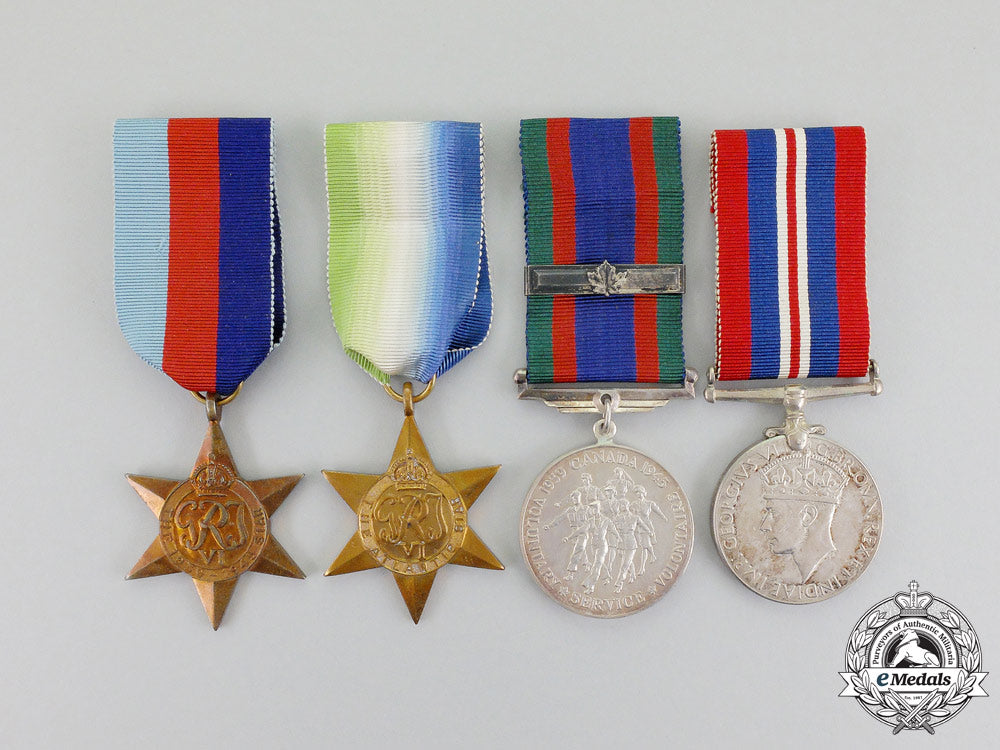
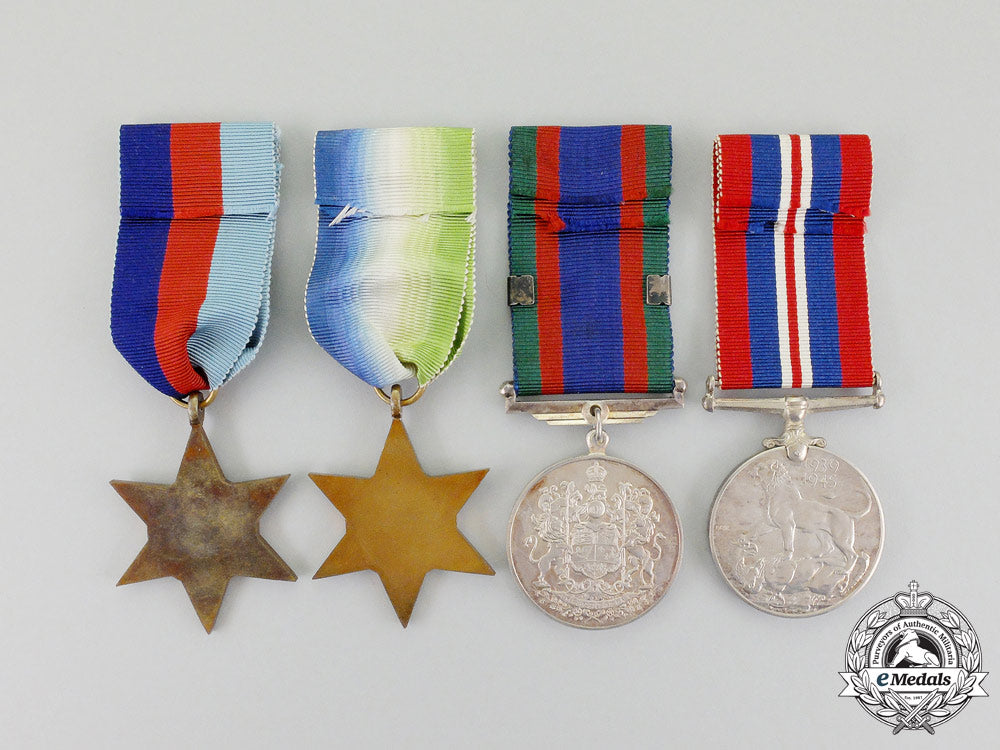
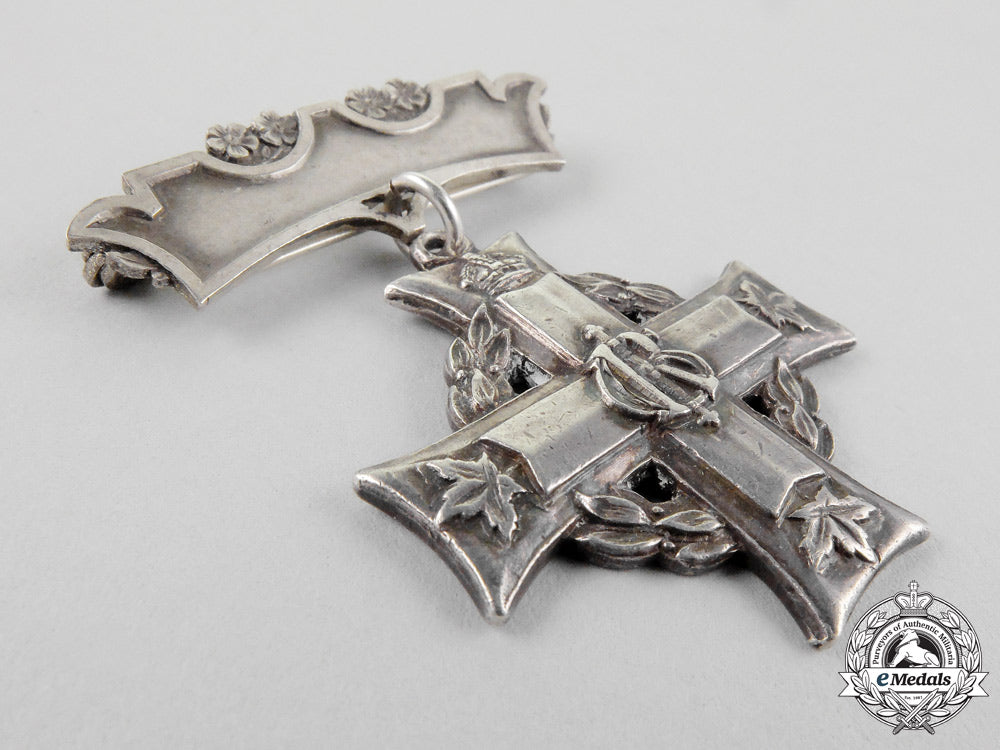
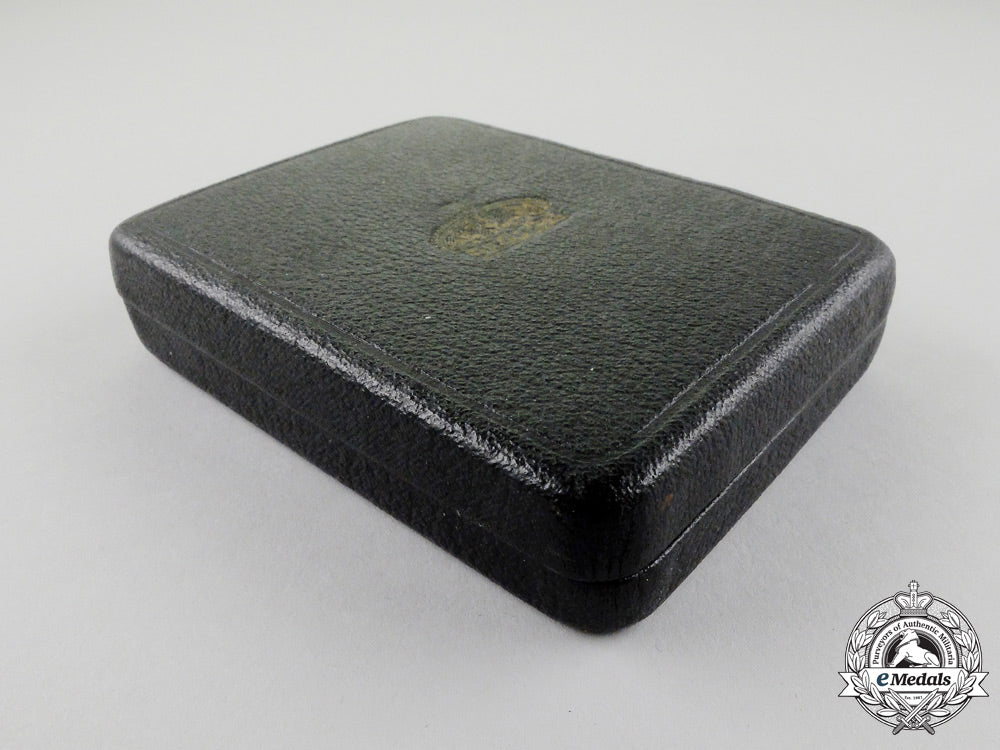
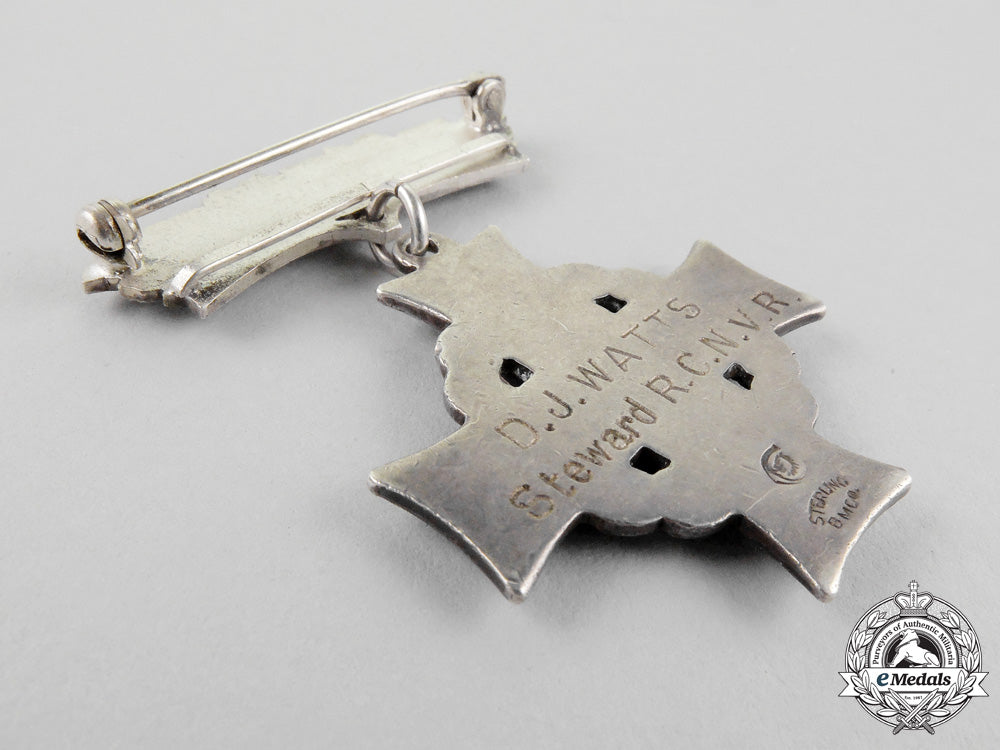
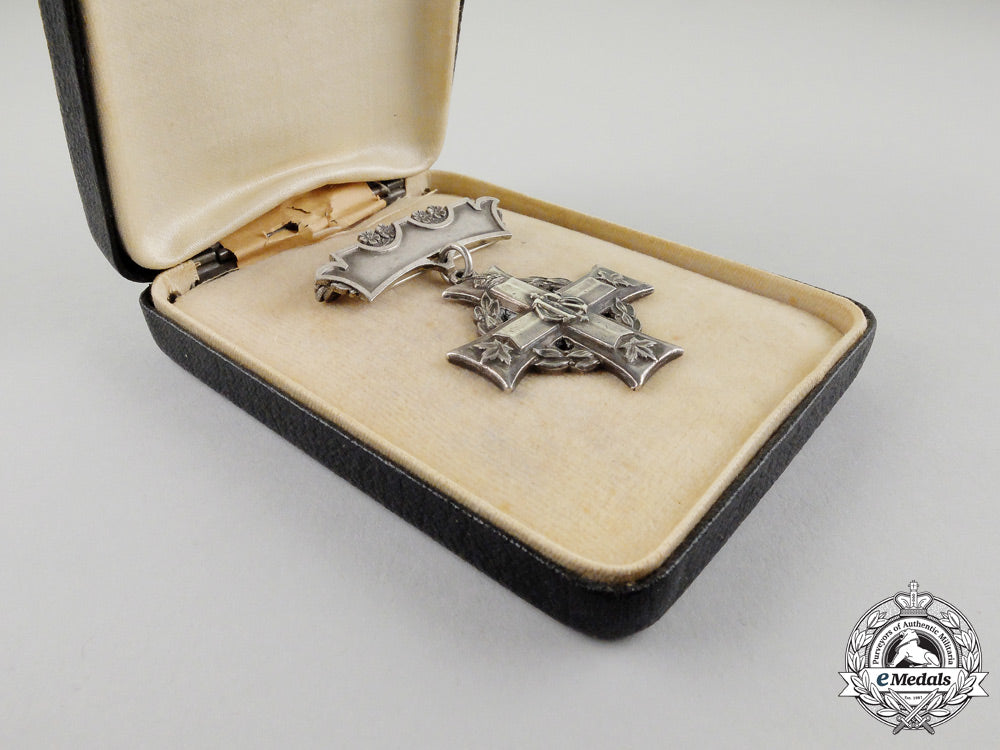
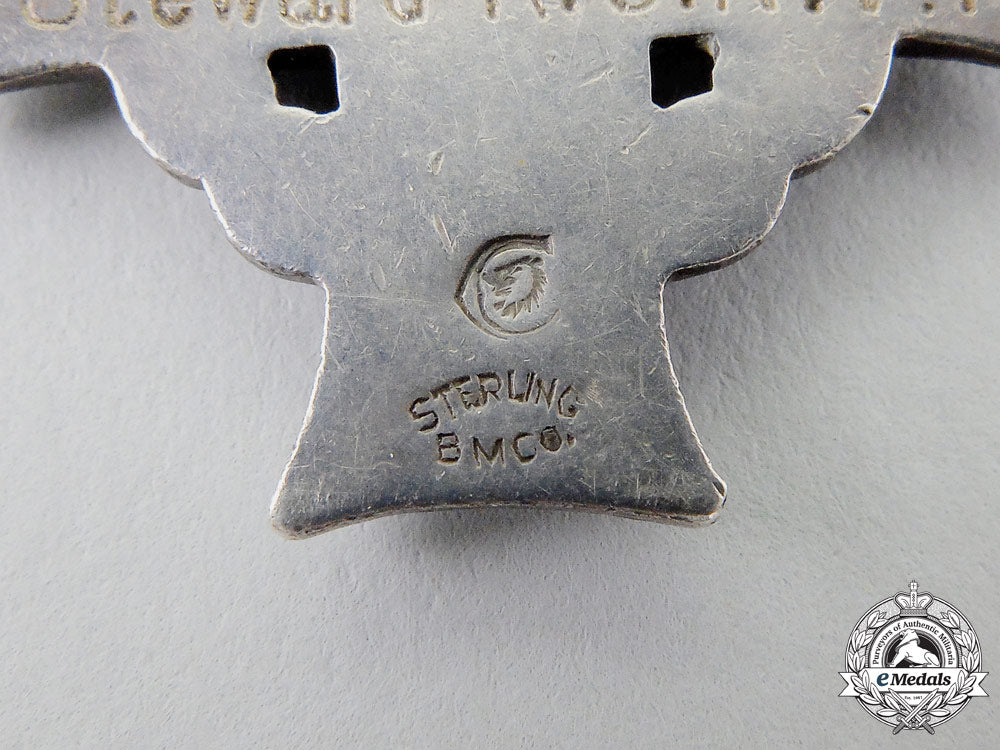
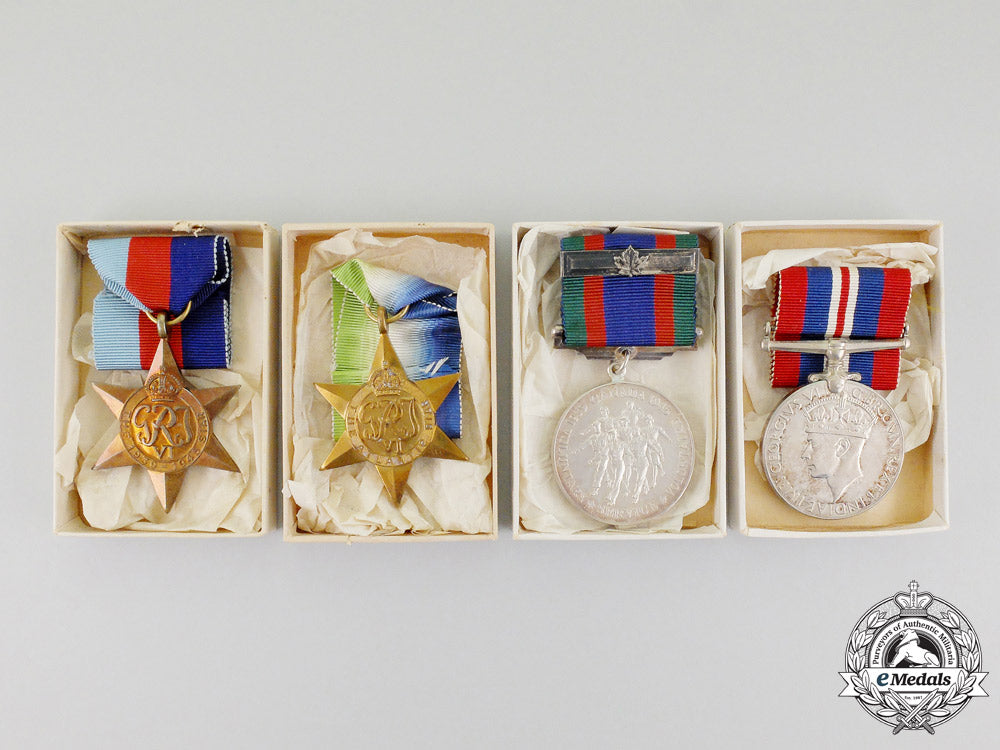
A Memorial Group To Steward Watts, Rcnvr Who Was Torpedoed Aboard Hmcs Spikenard
A Memorial Group To Steward Watts, Rcnvr Who Was Torpedoed Aboard Hmcs Spikenard
SKU: ITEM: C4939
Current Bid:
Your Max Bid:
Bid History:
Time Remaining:
Couldn't load pickup availability
Shipping Details
Shipping Details
eMedals offers rapid domestic and international shipping. Orders received prior to 12:00pm (EST) will be shipped on the same business day.* Orders placed on Canadian Federal holidays will be dispatched the subsequent business day. Courier tracking numbers are provided for all shipments. All items purchased from eMedals can be returned for a full monetary refund or merchandise credit, providing the criteria presented in our Terms & Conditions are met. *Please note that the addition of a COA may impact dispatch time.
Shipping Details
eMedals offers rapid domestic and international shipping. Orders received prior to 12:00pm (EST) will be shipped on the same business day.* Orders placed on Canadian Federal holidays will be dispatched the subsequent business day. Courier tracking numbers are provided for all shipments. All items purchased from eMedals can be returned for a full monetary refund or merchandise credit, providing the criteria presented in our Terms & Conditions are met. *Please note that the addition of a COA may impact dispatch time.
Description
Description
A Second War Canadian Memorial Cross Group of Five, to Steward Dan James Watts, Royal Canadian Naval Volunteer Reserve, HMCS Spikenard, KIA, Torpedoed by U-136; Canada; 1939-1945 Star; Atlantic Star; Canadian Volunteer Service Medal with Overseas Clasp; War Medal 1939-1945; and Memorial Cross, GRI (D.J. WATTS Steward R.C.N.V.R.). Naming is engraved on the MC, the medal suspended from a sterling silver RCNVR crown hanger with pinback, the four Second War medals are un-named as issued. Un-mounted, the Second War medals with original ribbons, in their boxes of issue, the MC without a ribbon and in its case of issue. Extremely fine.
Footnote: Dan James Watts was born on July 28, 1915 in Saskatoon, Saskatchewan, the son of Charles James Watts and Julia Mary Watts. He had two sisters, Grace Elizabeth Watts, later of the Nurses' Home, St. Bartholomew's Hospital, London, England, and Lorna Daisy Watts, later of Winkfield, Berkshire, England. His religion was Anglican (Church of England) and had a public school education but left school at the age of 14. His father, Charles James Watts, died on February 8, 1931, when Dan James Watts was 15. His mother ended up immigrating to England in the mid 1930s, residing at Woodside Cottage, near Crispin, Cranborne, near Windsor, Berkshire and as of May 1941, she was now 60 years of age and had been in England over five years. Before enlisting, Dan James Watts had been working as a Grocery Clerk for two and half months for The Great Atlantic and Pacific Tea Company (A&P) on Lauder Avenue in Toronto, Ontario, at a wage of $25 a week and was interested in joining the Merchant Marine. He signed his Canadian Active Service Force Attestation Paper, enlisting as a Probationer Steward with the Royal Canadian Naval Volunteer Reserve, on May 27, 1941 in Toronto and was placed on duty at Division Headquarters in Toronto on May 28th. Sixteen weeks later, he was posted to HMCS Stadacona, the naval base in Halifax, Nova Scotia, on September 17, 1941, preparing for overseas service. It was here that he was assigned as a Steward (V/27265) aboard HMCS Spikenard, a Flower-class corvette, which was named for the Spikenard Flower. The ship was built for the Royal Navy, laid down on February 24, 1940, launched on August 10, 1940 and commissioned on December 6, 1940, at Quebec City, Quebec as HMS Spikenard. She arrived at Halifax five days later to complete fitting out and working up and left Halifax on January 21, 1941, escorting convoy HX.104 to the United Kingdom, where she received her finishing touches at South Shields, Tyne, from February 4 to April 21, 1941. She arrived at Tobermory on April 22, 1941 to work up, and on May 15, 1941, she was transferred to the Royal Canadian Navy and was commissioned as HMCS Spikenard. On June 10, 1941, she left Aultbea to escort convoy OB.332. Arriving at Halifax on June 25, 1941, she joined Newfoundland Command, and between July 1941 and January 1942, made three round trips to Iceland as an ocean escort. On February 1, 1942, she left St. John's for convoy SC.67 on the recently inaugurated "Newfie-Derry" run, bound for Londonderry, Northern Ireland.
The Canadian corvette, HMCS Spikenard K198, was the senior ship of the escort for SC.67. Other escorts included Corvettes HMCS Chilliwack K131, HMCS Shediac K110, HMCS Louisburg K143, HMCS Lethbridge K160 and HMCS Dauphin K157. All went well until just before 2300 on Feb 10, 1942. The convoy was due south of Iceland (about 465 nautical miles west of Malin Head, Ireland in position 56º10'N, 21º07'W), when Chilliwack attacked a submerged contact on the port bow of the formation. Almost immediately thereafter, Louisburg at the rear of the convoy spotted the wake of a torpedo running down her port side. Spikenard had been zigzagging on the starboard wing of the convoy when another torpedo struck the nearby Norwegian tanker, M/S Heina. A few seconds later, a torpedo that ripped out her forepeak and destroyed the bridge and radio struck Spikenard (the port side bow near the bridge). Spikenard may have become aware of U-136 in the few minutes before, as action stations had been sounded and the speed increased just before she was hit. We'll never know, because not a man on Spikenard's bridge survived that night. In a few minutes, Spikenard sunk by the fore and headed for the bottom. In the confusion of battle, the other escorts in the group believed that only the now blazing and illuminated tanker had been struck, and rescued her entire crew. Spikenard was not on fire and the other escorts did not realize she was hit and sinking. The other escorts in the group had been caught up chasing contacts and did not realize that Spikenard was gone until she failed to answer repeated radio calls. Some escorts fell back, with only eight survivors found by a westbound British ship the next day. Spikenard's Commanding Officer, Lieutenant Commander Hubert George Shadforth had been the senior officer of the escort group. V/27265 Steward Dan James Watts, Royal Canadian Naval Volunteer Reserve was aboard HMCS Spikenard when she sank, on February 10, 1942, dying at the age of 26. He was officially listed as "Missing, presumed lost on Active Service. He was serving in H.M.C.S. "Spikenard" which was torpedoed and sunk by enemy action on 10th February, 1942." and was "discharged dead" on February 10, 1942. He is commemorated on page 123 of the Second World War Book of Remembrance and is remembered with honour on the Halifax Memorial, Panel 9 in Point Pleasant Park, Halifax, Nova Scotia. The Halifax Memorial is one of the few tangible reminders of the men who died at sea. Twenty-four ships were lost by the Royal Canadian Navy in the Second World War and nearly 2,000 members of the RCN lost their lives. This Memorial was erected by the Commonwealth War Graves Commission and was unveiled in November 1967 with a naval ceremony by H.P. MacKeen, Lieutenant-Governor of Nova Scotia, in the presence of R. Teillet, then Minister of Veterans Affairs. The monument is a great granite Cross of Sacrifice over twelve metres high, clearly visible to all ships approaching Halifax. The cross is mounted on a large podium bearing twenty-three bronze panels upon which are inscribed the names of over 3,000 Canadian men and women who were buried at sea.
The dedicatory inscription, in French and English, reads as follows: "1914-1939 /1918-1945 / IN THE HONOUR OF THE MEN AND WOMEN OF THE NAVY ARMY AND MERCHANT NAVY OF CANADA WHOSE NAMES ARE INSCRIBED HERE / THEIR GRAVES ARE UNKNOWN BUT THEIR MEMORY SHALL ENDURE." On June 19, 2003, the Government of Canada designated September 3rd of each year as a day to acknowledge the contribution of Merchant Navy Veterans. His mother, Julia Mary Watts, was issued his Memorial Cross, in April 1942 and was informed of his death by the Department of National Defence, however, she had predeceased him by one week, on February 3, 1942. His sister, Grace Watts, received his 1939-1945 Star, Atlantic Star, Canadian Volunteer Service Medal with Overseas Clasp and War Medal 1939-1945, in October 1945 and also took receipt of his Memorial Cross, as her mother has passed. In his Last Will and Testament, dated June 13, 1941 at Toronto, Dan James Watts had bequeathed everything unto his mother, Julia Watts, appointing he executor (executrix) of his Will but upon her death, his sister, Grace Watts, assumed the role. In regards to the German submarine that sank HMCS Spikenard, the U-136: it was a Type VIIC U-boat of Nazi Germany's Kriegsmarine during the Second World War. She was laid down at Vulkan-Vegesackerwerft in Bremen on October 2, 1940 as yard number 15, launched on July 5, 1941, commissioned on August 30th and became operational on January 1, 1942, with the 6th flotilla. The boat had a complement of between forty-four and sixty. U-136 is credited with sinking five ships, with a total of 23,649 gross register tons (GRT) and two warships totalling 1,850 tons. She also damaged one ship of 8,955 GRT. Her first patrol was unusual in that it was divided into three parts. Part one saw the boat depart Kiel on January 22, 1942 and arrive at Kristiansand in Norway on the 24th. Part two was from Kristiansand to Bergen, also in Norway. Part three involved the boat crossing the North Sea and negotiating the passage between the Faroe and Shetland Islands into the Atlantic Ocean. While with the Schlei Wolfpack from February1 to 12, 1942, she sank the Flower-class corvettes HMS Arbutus on February 5th and HMCS Spikenard on the 11th. She also sank the British cargo ship Empire Comet on the 17th. She then sailed to St. Nazaire in occupied France, arriving on March 1st. During U-136's second patrol, the boat damaged the American ship Axtell J. Byles off the North Carolina coast on April 19, 1942 and sunk the British cargo ship Empire Drum about 280 nmi (520 km; 320 mi) southeast of New York on the 24th. All the crew survived; one of them, the third engineer, was found floating with a part of the ship's cargo tucked under each arm: it was TNT. U-136 was also responsible for sinking the Dutch tanker Arundo on April 28th and the Canadian three-master schooner Mildred Pauline on May 8th. The boat's third and last patrol began with her departure from St. Nazaire on June 29, 1942. She was with the Hai Wolfpack from July 3 to 11, 1942, when, on July 11th, she was sunk with all hands (45 men), by depth charges from the Free French destroyer Léopard, the British frigate HMS Spey and the British sloop HMS Pelican west of Madeira.
Description
A Second War Canadian Memorial Cross Group of Five, to Steward Dan James Watts, Royal Canadian Naval Volunteer Reserve, HMCS Spikenard, KIA, Torpedoed by U-136; Canada; 1939-1945 Star; Atlantic Star; Canadian Volunteer Service Medal with Overseas Clasp; War Medal 1939-1945; and Memorial Cross, GRI (D.J. WATTS Steward R.C.N.V.R.). Naming is engraved on the MC, the medal suspended from a sterling silver RCNVR crown hanger with pinback, the four Second War medals are un-named as issued. Un-mounted, the Second War medals with original ribbons, in their boxes of issue, the MC without a ribbon and in its case of issue. Extremely fine.
Footnote: Dan James Watts was born on July 28, 1915 in Saskatoon, Saskatchewan, the son of Charles James Watts and Julia Mary Watts. He had two sisters, Grace Elizabeth Watts, later of the Nurses' Home, St. Bartholomew's Hospital, London, England, and Lorna Daisy Watts, later of Winkfield, Berkshire, England. His religion was Anglican (Church of England) and had a public school education but left school at the age of 14. His father, Charles James Watts, died on February 8, 1931, when Dan James Watts was 15. His mother ended up immigrating to England in the mid 1930s, residing at Woodside Cottage, near Crispin, Cranborne, near Windsor, Berkshire and as of May 1941, she was now 60 years of age and had been in England over five years. Before enlisting, Dan James Watts had been working as a Grocery Clerk for two and half months for The Great Atlantic and Pacific Tea Company (A&P) on Lauder Avenue in Toronto, Ontario, at a wage of $25 a week and was interested in joining the Merchant Marine. He signed his Canadian Active Service Force Attestation Paper, enlisting as a Probationer Steward with the Royal Canadian Naval Volunteer Reserve, on May 27, 1941 in Toronto and was placed on duty at Division Headquarters in Toronto on May 28th. Sixteen weeks later, he was posted to HMCS Stadacona, the naval base in Halifax, Nova Scotia, on September 17, 1941, preparing for overseas service. It was here that he was assigned as a Steward (V/27265) aboard HMCS Spikenard, a Flower-class corvette, which was named for the Spikenard Flower. The ship was built for the Royal Navy, laid down on February 24, 1940, launched on August 10, 1940 and commissioned on December 6, 1940, at Quebec City, Quebec as HMS Spikenard. She arrived at Halifax five days later to complete fitting out and working up and left Halifax on January 21, 1941, escorting convoy HX.104 to the United Kingdom, where she received her finishing touches at South Shields, Tyne, from February 4 to April 21, 1941. She arrived at Tobermory on April 22, 1941 to work up, and on May 15, 1941, she was transferred to the Royal Canadian Navy and was commissioned as HMCS Spikenard. On June 10, 1941, she left Aultbea to escort convoy OB.332. Arriving at Halifax on June 25, 1941, she joined Newfoundland Command, and between July 1941 and January 1942, made three round trips to Iceland as an ocean escort. On February 1, 1942, she left St. John's for convoy SC.67 on the recently inaugurated "Newfie-Derry" run, bound for Londonderry, Northern Ireland.
The Canadian corvette, HMCS Spikenard K198, was the senior ship of the escort for SC.67. Other escorts included Corvettes HMCS Chilliwack K131, HMCS Shediac K110, HMCS Louisburg K143, HMCS Lethbridge K160 and HMCS Dauphin K157. All went well until just before 2300 on Feb 10, 1942. The convoy was due south of Iceland (about 465 nautical miles west of Malin Head, Ireland in position 56º10'N, 21º07'W), when Chilliwack attacked a submerged contact on the port bow of the formation. Almost immediately thereafter, Louisburg at the rear of the convoy spotted the wake of a torpedo running down her port side. Spikenard had been zigzagging on the starboard wing of the convoy when another torpedo struck the nearby Norwegian tanker, M/S Heina. A few seconds later, a torpedo that ripped out her forepeak and destroyed the bridge and radio struck Spikenard (the port side bow near the bridge). Spikenard may have become aware of U-136 in the few minutes before, as action stations had been sounded and the speed increased just before she was hit. We'll never know, because not a man on Spikenard's bridge survived that night. In a few minutes, Spikenard sunk by the fore and headed for the bottom. In the confusion of battle, the other escorts in the group believed that only the now blazing and illuminated tanker had been struck, and rescued her entire crew. Spikenard was not on fire and the other escorts did not realize she was hit and sinking. The other escorts in the group had been caught up chasing contacts and did not realize that Spikenard was gone until she failed to answer repeated radio calls. Some escorts fell back, with only eight survivors found by a westbound British ship the next day. Spikenard's Commanding Officer, Lieutenant Commander Hubert George Shadforth had been the senior officer of the escort group. V/27265 Steward Dan James Watts, Royal Canadian Naval Volunteer Reserve was aboard HMCS Spikenard when she sank, on February 10, 1942, dying at the age of 26. He was officially listed as "Missing, presumed lost on Active Service. He was serving in H.M.C.S. "Spikenard" which was torpedoed and sunk by enemy action on 10th February, 1942." and was "discharged dead" on February 10, 1942. He is commemorated on page 123 of the Second World War Book of Remembrance and is remembered with honour on the Halifax Memorial, Panel 9 in Point Pleasant Park, Halifax, Nova Scotia. The Halifax Memorial is one of the few tangible reminders of the men who died at sea. Twenty-four ships were lost by the Royal Canadian Navy in the Second World War and nearly 2,000 members of the RCN lost their lives. This Memorial was erected by the Commonwealth War Graves Commission and was unveiled in November 1967 with a naval ceremony by H.P. MacKeen, Lieutenant-Governor of Nova Scotia, in the presence of R. Teillet, then Minister of Veterans Affairs. The monument is a great granite Cross of Sacrifice over twelve metres high, clearly visible to all ships approaching Halifax. The cross is mounted on a large podium bearing twenty-three bronze panels upon which are inscribed the names of over 3,000 Canadian men and women who were buried at sea.
The dedicatory inscription, in French and English, reads as follows: "1914-1939 /1918-1945 / IN THE HONOUR OF THE MEN AND WOMEN OF THE NAVY ARMY AND MERCHANT NAVY OF CANADA WHOSE NAMES ARE INSCRIBED HERE / THEIR GRAVES ARE UNKNOWN BUT THEIR MEMORY SHALL ENDURE." On June 19, 2003, the Government of Canada designated September 3rd of each year as a day to acknowledge the contribution of Merchant Navy Veterans. His mother, Julia Mary Watts, was issued his Memorial Cross, in April 1942 and was informed of his death by the Department of National Defence, however, she had predeceased him by one week, on February 3, 1942. His sister, Grace Watts, received his 1939-1945 Star, Atlantic Star, Canadian Volunteer Service Medal with Overseas Clasp and War Medal 1939-1945, in October 1945 and also took receipt of his Memorial Cross, as her mother has passed. In his Last Will and Testament, dated June 13, 1941 at Toronto, Dan James Watts had bequeathed everything unto his mother, Julia Watts, appointing he executor (executrix) of his Will but upon her death, his sister, Grace Watts, assumed the role. In regards to the German submarine that sank HMCS Spikenard, the U-136: it was a Type VIIC U-boat of Nazi Germany's Kriegsmarine during the Second World War. She was laid down at Vulkan-Vegesackerwerft in Bremen on October 2, 1940 as yard number 15, launched on July 5, 1941, commissioned on August 30th and became operational on January 1, 1942, with the 6th flotilla. The boat had a complement of between forty-four and sixty. U-136 is credited with sinking five ships, with a total of 23,649 gross register tons (GRT) and two warships totalling 1,850 tons. She also damaged one ship of 8,955 GRT. Her first patrol was unusual in that it was divided into three parts. Part one saw the boat depart Kiel on January 22, 1942 and arrive at Kristiansand in Norway on the 24th. Part two was from Kristiansand to Bergen, also in Norway. Part three involved the boat crossing the North Sea and negotiating the passage between the Faroe and Shetland Islands into the Atlantic Ocean. While with the Schlei Wolfpack from February1 to 12, 1942, she sank the Flower-class corvettes HMS Arbutus on February 5th and HMCS Spikenard on the 11th. She also sank the British cargo ship Empire Comet on the 17th. She then sailed to St. Nazaire in occupied France, arriving on March 1st. During U-136's second patrol, the boat damaged the American ship Axtell J. Byles off the North Carolina coast on April 19, 1942 and sunk the British cargo ship Empire Drum about 280 nmi (520 km; 320 mi) southeast of New York on the 24th. All the crew survived; one of them, the third engineer, was found floating with a part of the ship's cargo tucked under each arm: it was TNT. U-136 was also responsible for sinking the Dutch tanker Arundo on April 28th and the Canadian three-master schooner Mildred Pauline on May 8th. The boat's third and last patrol began with her departure from St. Nazaire on June 29, 1942. She was with the Hai Wolfpack from July 3 to 11, 1942, when, on July 11th, she was sunk with all hands (45 men), by depth charges from the Free French destroyer Léopard, the British frigate HMS Spey and the British sloop HMS Pelican west of Madeira.









You May Also Like
Germany, HJ. A 1938 National Trade Competition Victor’s Badge, Gold Grade in Case, By Gustav Brehmer
G60096
Italy, Republic. An Order of Merit of the Italian Republic, Grand Cross Set by Johnson, 1970
EU23677
Spain, Franco Period. An Order of Civil Merit, Grand Cross Set
EU23731
Russia, Imperial. An Order of St. Anne, II Class in Gold
EU23720
Austria, Imperial. An Order of the Iron Crown, III Class in Gold, by Rothe, c.1900
EU23723
-
Germany, HJ. A 1938 National Trade Competition Victor’s Badge, Gold Grade in Case, By Gustav Brehmer
G60096
Add to CartRegular price $3,950 USDRegular price $0 USD Sale price $3,950 USDUnit price / per -
Italy, Republic. An Order of Merit of the Italian Republic, Grand Cross Set by Johnson, 1970
EU23677
Add to CartRegular price $950 USDRegular price $0 USD Sale price $950 USDUnit price / per -
Spain, Franco Period. An Order of Civil Merit, Grand Cross Set
EU23731
Add to CartRegular price $600 USDRegular price $0 USD Sale price $600 USDUnit price / per -
Russia, Imperial. An Order of St. Anne, II Class in Gold
EU23720
Add to CartRegular price $2,950 USDRegular price $0 USD Sale price $2,950 USDUnit price / per -
Austria, Imperial. An Order of the Iron Crown, III Class in Gold, by Rothe, c.1900
EU23723
Add to CartRegular price $3,950 USDRegular price $0 USD Sale price $3,950 USDUnit price / per
Do you have a similar item you are interested in selling?
Please complete the form and our client care representatives will contact you.
Sell Item






















